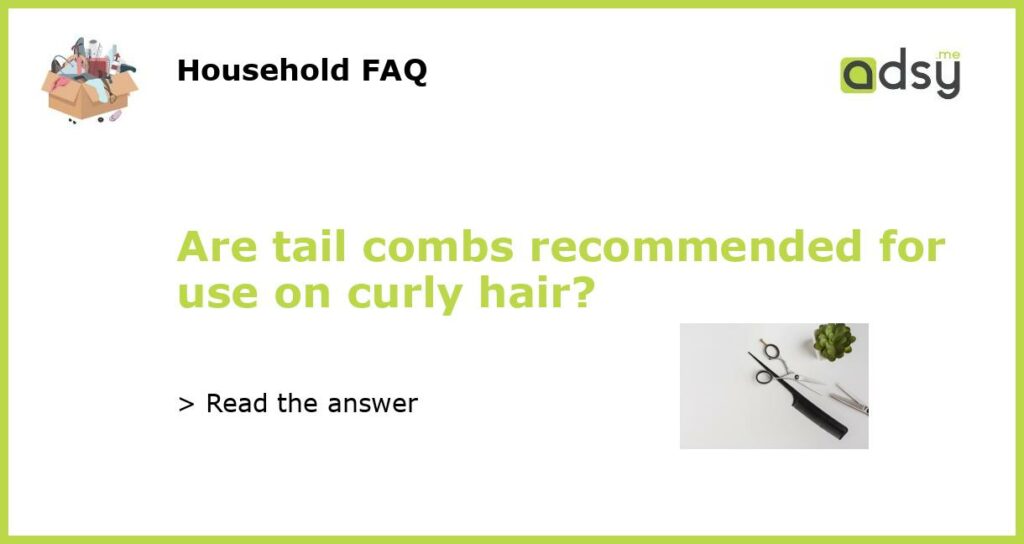The Purpose of a Tail Comb
A tail comb is a hair styling tool that is commonly used to section and style hair. It typically has a long, thin handle with a pointed end and a comb attached at the other end. The primary purpose of a tail comb is to create precise parts in the hair or to comb and detangle specific sections.
Understanding Curly Hair
Curly hair has a unique texture and structure compared to straight or wavy hair. It tends to be drier and more prone to frizz and tangles. The natural curl pattern of the hair can range from loose curls to tight coils. Consequently, curly hair requires special care and attention to maintain its health and prevent breakage.
The Potential Risks of Using a Tail Comb on Curly Hair
While tail combs can be useful for creating defined parts or precise hairstyles, they may not be the best option for use on curly hair. Here are a few potential risks associated with using a tail comb on curly hair:
A. Damage to the Hair Strands: Curly hair is more fragile and prone to breakage. The fine teeth of a tail comb can snag or pull on the hair strands, causing damage and breakage.
B. Disruption of Curl Pattern: Curly hair relies on its natural curl pattern for its unique texture and appearance. Combing through the hair with a tail comb can disrupt the curl pattern, leading to frizz and undefined curls.
C. Increased Frizz and Tangles: Curly hair tends to be more prone to frizz and tangles. Combining a tail comb with curly hair can increase friction and create more frizz and tangles, making it challenging to achieve a smooth, defined hairstyle.
Alternatives to Tail Combs for Curly Hair
Fortunately, there are alternative tools and techniques that are better suited for styling and caring for curly hair. Here are a few options:
A. Wide-Tooth Comb: A wide-tooth comb has larger gaps between the teeth, making it easier to detangle curly hair without causing as much breakage or disrupting the curl pattern. This type of comb can be used to gently remove knots and distribute hair products evenly.
B. Fingers: Many people with curly hair prefer to use their fingers to detangle and style their hair. The fingers can carefully separate and define curls without causing excessive damage or frizz. Using fingers can also provide better control and a more personalized approach to styling.
C. Denman Brush: The Denman brush is a popular choice among curly-haired individuals. It has widely spaced, flexible bristles that can glide through curly hair without disrupting the curl pattern or causing excessive frizz. It can be used to evenly distribute products and define curls.
Taking Care of Curly Hair
In addition to using the right tools, it’s essential to follow a proper hair care routine to keep curly hair healthy and well-maintained. Here are a few tips:
A. Moisturize: Curly hair tends to be dry, so it’s crucial to moisturize regularly. Use hydrating shampoos and conditioners, and consider incorporating deep conditioning treatments into your routine.
B. Avoid Heat: Excessive heat can further dry out curly hair and lead to damage. Minimize the use of heat styling tools, and when you do use them, always apply a heat protectant product first.
C. Embrace Natural Styles: Allow your natural curls to shine by embracing your hair’s natural texture. Limit the use of harmful styling practices like excessive brushing, combing, or use of chemical treatments.
D. Protect Your Hair During Sleep: Use silk or satin pillowcases or wrap your hair in a silk scarf or bonnet when sleeping to prevent friction, which can cause frizz and breakage.
E. Regular Trims: To prevent split ends and maintain the health of your curly hair, schedule regular trims to remove any damaged or split ends.






